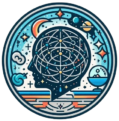Introduction
Mental health is often spoken about in terms of disorders, diagnoses, or crises. Yet reducing it to pathology alone misses a vital truth: mental health is not merely the absence of illness but the presence of well-being.
The World Health Organization (WHO, 2020) defines mental health as a “state of well-being” in which an individual realizes their abilities, can cope with life’s stresses, work productively, and contribute to their community. In this sense, mental health extends beyond medical categories into a holistic experience that touches every dimension of human life—emotional, social, physical, and psychological.
Read More: Gen Z Mental Well-Being
Historical Context
Historically, psychology emphasized pathology. The early 20th century saw the rise of psychiatry focused on diagnosing and treating “abnormal” behaviors (Wakefield, 1992). By mid-century, humanistic psychologists such as Maslow (1968) and Rogers (1961) introduced new paradigms centered on growth, fulfillment, and self-actualization. Their work paved the way for positive psychology, a field that explicitly examines flourishing and well-being (Seligman & Csikszentmihalyi, 2000).
Today, the conversation has shifted from “What is wrong with you?” to “What makes life worth living?” The concept of well-being bridges clinical practice, public health, and everyday life, acknowledging that mental health exists on a continuum.
Defining Well-Being
Although no single definition captures the full complexity, scholars identify key elements of well-being:
- Hedonic well-being – rooted in pleasure, happiness, and life satisfaction (Kahneman et al., 1999).
- Eudaimonic well-being – focused on meaning, purpose, and self-realization (Ryan & Deci, 2001).
- Social well-being – encompassing belonging, positive relationships, and community integration (Keyes, 2002).
Taken together, these approaches highlight that well-being involves feeling good, functioning well, and living meaningfully.

Dimensions of Well-Being
Some of the dimensions of well-being include:
1. Emotional Well-Being
Emotional well-being refers to the regulation and experience of emotions. It includes positive affect (joy, gratitude, love) and the ability to manage negative affect (sadness, anger, anxiety). Research shows that cultivating emotional intelligence—the capacity to recognize and regulate emotions—correlates with resilience and satisfaction (Mayer, Caruso, & Salovey, 2016).
2. Physical Well-Being
Physical health and mental health are deeply intertwined. Exercise, sleep, and nutrition significantly affect mood, cognition, and overall psychological balance. For example, regular physical activity reduces the risk of depression and enhances cognitive performance (Biddle, Mutrie, & Gorely, 2015). The mind-body connection underscores that well-being cannot be compartmentalized.
3. Social Well-Being
Humans are inherently social beings. Loneliness is not only emotionally painful but also a predictor of mortality comparable to smoking or obesity (Holt-Lunstad, Smith, Baker, Harris, & Stephenson, 2015). Social well-being involves supportive relationships, community belonging, and prosocial behavior. Interpersonal ties provide not only emotional sustenance but also a buffer against stress.
4. Psychological Well-Being
Ryff’s (1989) model of psychological well-being identifies six components: autonomy, environmental mastery, personal growth, positive relations, purpose in life, and self-acceptance. These dimensions reflect the deeper sense of fulfillment and growth beyond momentary happiness. They form the backbone of eudaimonic well-being.
Beyond Labels
Framing mental health only as “illness” stigmatizes those with diagnoses while ignoring the universal pursuit of well-being. A broader framework benefits society in several ways:
- Destigmatization – Emphasizing that everyone has mental health normalizes conversations.
- Prevention – Promoting well-being reduces risk factors for disorders.
- Inclusion – Recognizing diverse expressions of well-being allows cultural variation.
- Empowerment – Encouraging self-care and resilience supports autonomy.

Well-Being Across Cultures
Western psychology often emphasizes individual achievement, but well-being manifests differently across cultures. In collectivist societies, harmony and community may weigh more than autonomy (Delle Fave, Brdar, Freire, Vella-Brodrick, & Wissing, 2011). Indigenous frameworks may integrate spiritual, ecological, and ancestral dimensions. This pluralism highlights the importance of cultural sensitivity when defining well-being.

Contemporary Models of Well-Being
Several frameworks integrate diverse aspects of well-being:
-
- PERMA Model (Seligman, 2011): Positive emotion, Engagement, Relationships, Meaning, Accomplishment.
- Dual-Continua Model (Keyes, 2002): Mental illness and well-being exist on separate axes, allowing for flourishing even with illness.
- WHO Model (World Health Organization, 2020): A broad view linking mental, social, and physical health as interconnected states.
These models underscore that well-being is not just a private matter but a public concern, shaped by social structures and environments.
Challenges to Well-Being
Well-being is aspirational but not equally accessible. Barriers include poverty, discrimination, trauma, and systemic inequities. For instance, socioeconomic stress significantly lowers well-being, independent of individual traits (Dodge, Daly, Huyton, & Sanders, 2012). Addressing well-being therefore requires both individual and structural change.
Promoting Well-Being
- Mindfulness and meditation – enhance emotional regulation and reduce stress (Kabat-Zinn, 2003).
- Exercise and sleep hygiene – foundational for both physical and psychological health (Biddle et al., 2015).
- Gratitude practices – improve positive affect and life satisfaction (Emmons & McCullough, 2003).
- Strong relationships – social support is consistently linked with higher well-being (Holt-Lunstad et al., 2015).
- Meaningful goals – pursuing intrinsic goals fosters sustainable fulfillment (Ryan & Deci, 2001).
Future Directions
Research increasingly emphasizes well-being as a policy concern, not just an individual responsibility. Governments such as New Zealand have adopted “well-being budgets,” integrating psychological health into economic planning (Durand, 2015). Such initiatives signal a shift toward embedding mental health into the very fabric of societal progress.
Conclusion
Well-being is more than a label or diagnosis; it is a multidimensional, lived experience. Defined by emotional balance, physical vitality, social belonging, and psychological growth, it offers a richer picture of mental health. By moving beyond illness-focused narratives, psychology not only destigmatizes mental health but also empowers individuals and communities to flourish. As Mental Health Day approaches, remembering that well-being is a universal human pursuit may be one of the most vital messages of all.
References
Biddle, S., Mutrie, N., & Gorely, T. (2015). Psychology of physical activity: Determinants, well-being, and interventions (3rd ed.). Routledge.
Dawkins, R. (1976). The selfish gene. Oxford University Press.
Delle Fave, A., Brdar, I., Freire, T., Vella-Brodrick, D., & Wissing, M. P. (2011). The eudaimonic and hedonic components of happiness: Qualitative and quantitative findings. Social Indicators Research, 100(2), 185–207. https://doi.org/10.1007/s11205-010-9632-5
Dodge, R., Daly, A. P., Huyton, J., & Sanders, L. D. (2012). The challenge of defining well-being. International Journal of Wellbeing, 2(3), 222–235. https://doi.org/10.5502/ijw.v2i3.4
Durand, M. (2015). The OECD better life initiative: How’s life? and the measurement of well-being. Review of Income and Wealth, 61(1), 4–17. https://doi.org/10.1111/roiw.12156
Emmons, R. A., & McCullough, M. E. (2003). Counting blessings versus burdens: An experimental investigation of gratitude and subjective well-being. Journal of Personality and Social Psychology, 84(2), 377–389. https://doi.org/10.1037/0022-3514.84.2.377
Holt-Lunstad, J., Smith, T. B., Baker, M., Harris, T., & Stephenson, D. (2015). Loneliness and social isolation as risk factors for mortality: A meta-analytic review. Perspectives on Psychological Science, 10(2), 227–237. https://doi.org/10.1177/1745691614568352
Kabat-Zinn, J. (2003). Mindfulness-based interventions in context: Past, present, and future. Clinical Psychology: Science and Practice, 10(2), 144–156. https://doi.org/10.1093/clipsy/bpg016
Kahneman, D., Diener, E., & Schwarz, N. (1999). Well-being: Foundations of hedonic psychology. Russell Sage Foundation.
Keyes, C. L. M. (2002). The mental health continuum: From languishing to flourishing in life. Journal of Health and Social Behavior, 43(2), 207–222. https://doi.org/10.2307/3090197
Maslow, A. H. (1968). Toward a psychology of being (2nd ed.). Van Nostrand.
Mayer, J. D., Caruso, D. R., & Salovey, P. (2016). The ability model of emotional intelligence: Principles and updates. Emotion Review, 8(4), 290–300. https://doi.org/10.1177/1754073916639667
Rogers, C. (1961). On becoming a person: A therapist’s view of psychotherapy. Houghton Mifflin.
Ryan, R. M., & Deci, E. L. (2001). On happiness and human potentials: A review of research on hedonic and eudaimonic well-being. Annual Review of Psychology, 52(1), 141–166. https://doi.org/10.1146/annurev.psych.52.1.141
Ryff, C. D. (1989). Happiness is everything, or is it? Explorations on the meaning of psychological well-being. Journal of Personality and Social Psychology, 57(6), 1069–1081. https://doi.org/10.1037/0022-3514.57.6.1069
Seligman, M. E. P. (2011). Flourish: A visionary new understanding of happiness and well-being. Free Press.
Seligman, M. E. P., & Csikszentmihalyi, M. (2000). Positive psychology: An introduction. American Psychologist, 55(1), 5–14. https://doi.org/10.1037/0003-066X.55.1.5
Wakefield, J. C. (1992). The concept of mental disorder: On the boundary between biological facts and social values. American Psychologist, 47(3), 373–388. https://doi.org/10.1037/0003-066X.47.3.373
World Health Organization. (2020). Mental health: Strengthening our response. Geneva: WHO.
Subscribe to PsychUniverse
Get the latest updates and insights.
Join 3,022 other subscribers!
Niwlikar, B. A. (2025, October 5). 4 Essential Dimensions of Well-Being for a Healthier and Happier Life. PsychUniverse. https://psychuniverse.com/dimensions-of-well-being/



